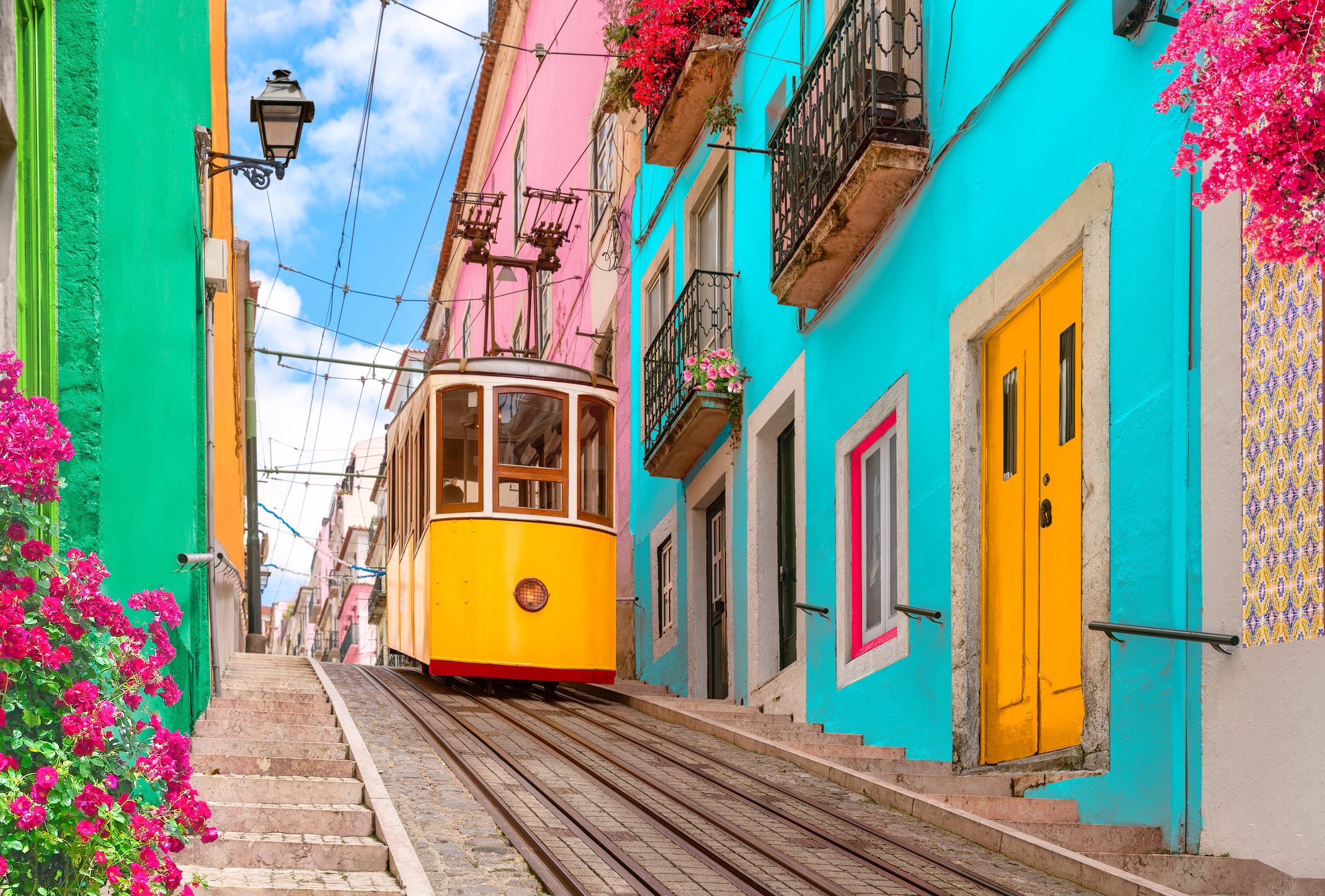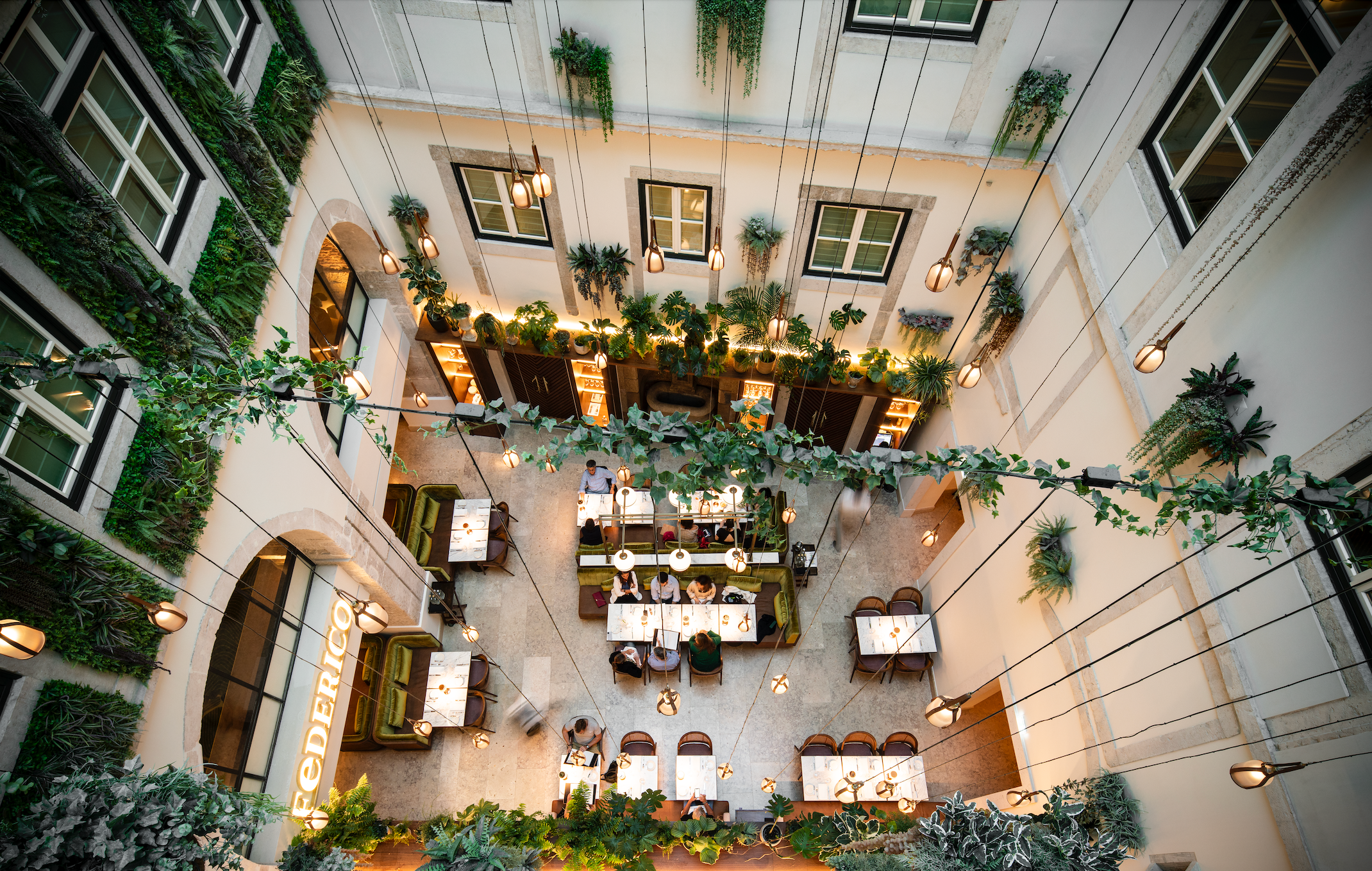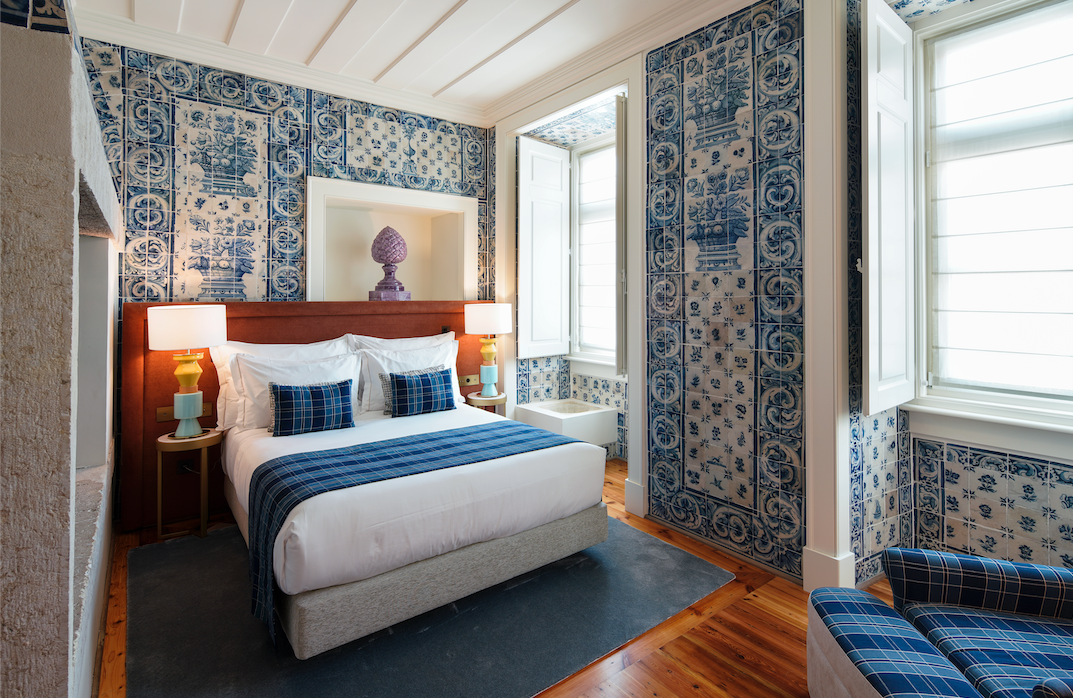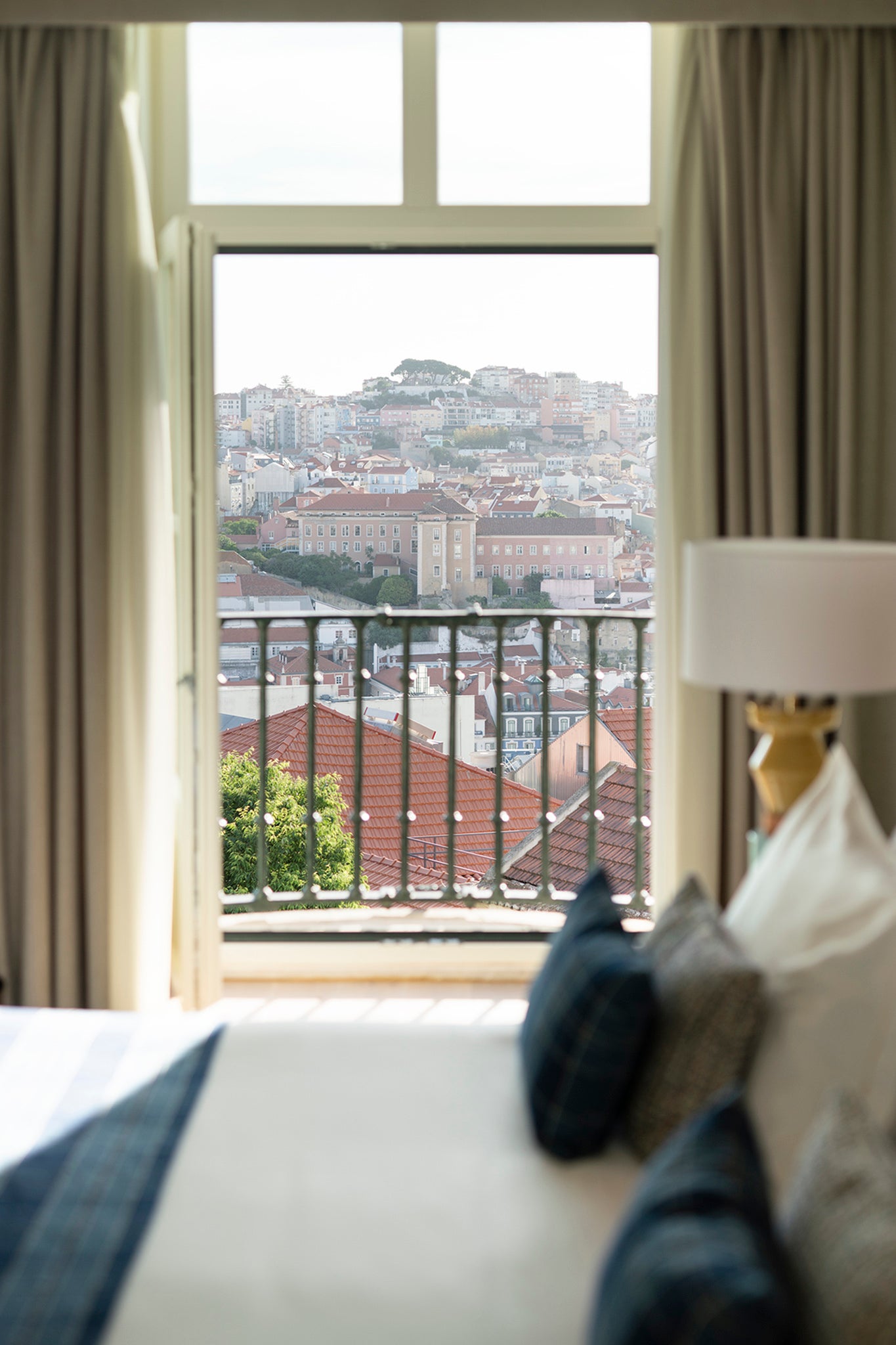An insider’s guide to the perfect spring break in Lisbon and how it stole Paris’s crown
A home-from-home, Victoria Harper has spent the last 20 years visiting the Portuguese capital and knows its streets inside out. Here are her recommendations for the perfect pre-summer break

When you have been a visitor to a city for two decades, you become pretty expert at knowing the best times to book a trip. Thanks to meeting and marrying a Portuguese man from Lisbon 20 years ago (we met in Acton – distinctly less glamorous than Alfama), I know my way around these patchwork streets, famous for their slippery black and white mosaic tiles (calçada portuguesa).
I quickly discovered that heading here in the summer is a rookie error. Famed for its seven hills, what looks like a 10-minute journey on Google Maps can take the best part of an hour and two bottles of water in the 38C heat of an August day. Nobody’s knees need that, and even if you opt for one of the city’s old-fashioned trams to get around, their rickety charm is short-lived when you are pressed against a sweaty summer armpit. Winter can be a health hazard thanks to rain and ice meeting the said calçada portuguesa, and while autumn can be a blast, it is spring when the city truly blossoms – literally.
At the best of times, Lisbon, with its pretty azulejos tiles and sunshine-yellow buildings, is one of Europe’s most colourful cities. But when the jacaranda trees burst into purple bloom, the colorama effect is dialled up to dazzling. Whether they are lining the magnificent Avenida Liberdade, dotting the climb up through Mouraria to Castelo São Jorge, or bunched on a restaurant table, the life-affirming punch of violet enhances everything in its frame. And it all adds to Lisbon’s enchantment, which I truly believe gives the romance of a spring day in Paris a run for its money.
To soak some of this up, we were invited on a romantic break to the wonderful Palácio Ludovice, which is located in Príncipe Real, a neighbourhood sitting on a hill opposite Graça.
They have two very different vibes – Príncipe Real is more the party side of Lisbon, while Graça has a more traditional-meets-craft-hipster energy. Both have sweeping views over the city, but it’s in Principe Real where some of Lisbon’s grandest houses were built, many of which have now been transformed into some of the city’s most elegant historical hotels.
This hotel was the former private residence of João Frederico Ludovice, architect to King João V in the 18th century. Its rooms and halls have been given new life as 61 individually designed suites, furnished with handpicked pieces from high-end Portuguese makers and designers. The stunning indoor courtyard plays host to five floors of lush hanging gardens and really brings the outside in, allowing natural light to flood the interior. Like Paris, this city is also dubbed “the city of light” for a reason.
It’s also worth noting that these solid walls are not just made from thick, cool stone painstakingly decorated with traditional azulejos, but they also hold up one of the few buildings that survived the 1755 Lisbon earthquake. Its then unique design inspired the architecture of “Pombaline buildings”, constructed to “shake but not fall” – a comforting thought for anyone who saw the news of the Lisbon earthquake this February, measuring 4.7 on the Richter scale. Just saying.

Across the road from the hotel, you’ll find the Miradouro de São Pedro de Alcântara observation point with sweeping views across the city and the river Tagus. My tip would be to take a moment to enjoy the sight with a coffee from the kiosk there. (Kiosks have suddenly become super fashionable in Lisbon, and they have some of the best bicas (short coffees) and traditional delicacies, like pastéis de nata or mini chicken pies). It is the perfect spot to catch the early morning rays. Either that, or head to one of the deckchairs by the riverfront just past Cais do Sodré (which you can walk down to easily from here) and just watch the world float by.
I would also recommend a trip to Belém (two stops on the train from Cais do Sodré). A visit to the Mosteiro dos Jerónimos provides a fascinating lesson in Portuguese history, and being by the water, where the estuary opens up into the Atlantic, is a wonderful place to bask in warm spring sunshine. If you’re here for more than a few days, I’d pack in a beach trip too. The train from Cais do Sodré to Belem will also take you to the pretty beach town of Cascais. Or you could catch an Uber (they’re everywhere in Portugal) and head across the red bridge (Ponte 25 de Abril) to Costa da Caparica. I love the beachside restaurant at Praia Princesa, but Praia-Irmão is also great for a chilled-out vibe and a beach lounge for a sundowner. People do swim in April, but take a scarf as the wind can still carry a chill, even if there isn’t a cloud in the sky.

Other great spring jaunts in the city include the flea market Feira da Ladra (translation: “thieves’ market”) in the old neighbourhood of Alfama. The No 28 tram (non-sweaty at this time of year!) will take you from Chiado (down from Palácio Ludovice) across the city and up to the other side. For another blast of jacaranda tree beauty, get off just before the stop for Feira da Ladra and visit Miradouro de São Vicente for another kiosk coffee – or maybe a beer (ask for a small “imperial”). With its views over one of Lisbon’s oldest districts, it is among my favourite romantic spots and there are always a few musicians there to serenade you too.
For food, chic Lisboetas will often head to Praça das Flores. The name translates to “place of the flowers” – perfectly pitched for this time of year. There are plenty of destination restaurants dotted around the square, I love Magnolia, a brilliant, buzzy bistro serving some of the best small plates in Lisbon.

Or you could head to nearby Green Street: unlike downtown’s Pink Street (or “party street”, as I call it), it isn’t painted its namesake colour but earned its nickname from the flowers and plants cascading down from its buildings. It was first started by a resident nearly a decade ago and caught on with the rest of the street who wanted to promote sustainability in a stylish way. Perfectly Instagrammable, of course, but also for food with amazing restaurants here serving traditional Portuguese petiscos (tapas), as well as African street fare and excellent vegetarian and vegan options, too. Very cool.
But for us, we headed back to Palácio Ludovice to tummy-test the lovely Federico restaurant in the well of the atrium. What a treat to kick back and play tourist in my home-from-home city – but not before tasting some of the best wines Portugal has to offer.

My husband always says that Portuguese wines aren’t as well known as Spanish ones because they are so good the Portuguese drink them all before they leave the country. The team at Ludovice are passionate about sharing this secret with the world. A wine experience hotel through and through, its entire decor is themed around vines, with even the carpets’ quirky patterns taken from satellite images of vineyards in the Douro Valley.
Hell, even the gym, is situated under the vaulted ceilings of what was once the palace’s wine cellar and its Caudalie spa specialises in vinothérapie. Their dedicated sommelier hosts pre-dinner wine tastings most evenings and we have a perky pre-dinner hour mingling with other guests and acquainting our palates with everything from the mineral-infused white wines of Madeira to the full-bodied, fruity reds from the Alentejo.
Springtime in Paris? Why would you, when the wine is this good in Portugal?
Prices for April-May start from 390€/night find out more about Palácio Ludovice here.




Join our commenting forum
Join thought-provoking conversations, follow other Independent readers and see their replies
Comments